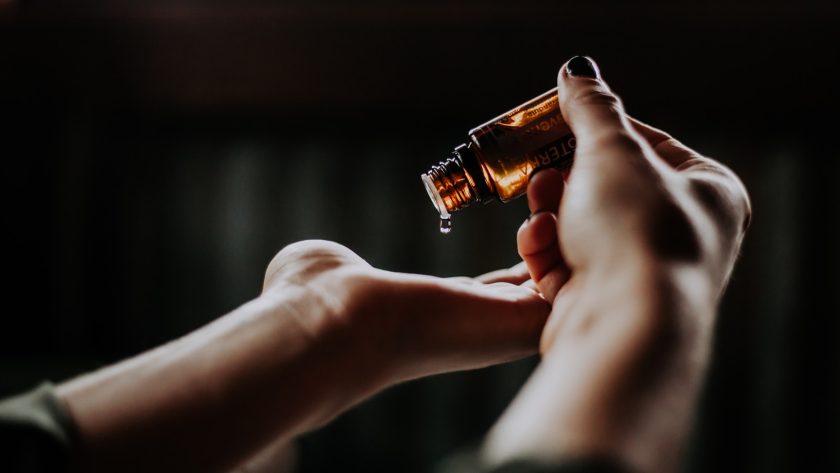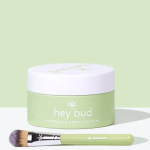If there’s one skin care ingredient that’s gotten a ton of hype over the last decade, it’s retinoids – the group of vitamin A derivatives that provide countless skin benefits, including treating .acne, increasing cell turnover, boosting collagen production, and smoothing out fine lines and wrinkles.
Underneath the umbrella of retinoids, there are a slew of other terms you may have heard of, including retinol, trentinoin, and Retin-A. What is the difference? Is it the same thing? They are, at least in part, the same thing, but not exactly. Here are the details on what to do and what not to do.
Vocab: Vitamin A derivatives
- Retinoids: Prescription-strength vitamin A derivatives
- Tretinoin: a certain type of a prescription retinoid.
- Retin-A is a brand name for prescription tretinoin.
- Retinols: Weaker, over-the-counter (OTC) vitamin A products
Retinoids vs. retinols
“Dermatologists refer to retinoids as the prescription-strength vitamin A derivatives of which there are many,” explains Blair Murphy, M.D., dermatologist at MDCS Dermatology Manhattan and Hampton Bays and Clinical Assistant Professor at New York-Presbyterian Hospital Cornell.
Tretinoin, Tamarotene, or Adapalene are some of the most well-known retinoids.
Retinols, a weaker form of vitamin A, can be bought OTC without the need for a prescription. These are gentler than retinoids but don’t provide the same dramatic results.
Retin-A is a trademark
Retin-A is a specific brand of topical retinoid products that contain the active ingredient .tretinoin.
Your dermatologist must prescribe Retin-A. You can find it in cream or gel form and in different strengths. Concentrations range from 0.01 to 0.1%.
What does Retin-A do?
Dr. Murphy explains that all vitamin A derivatives, such as Retin-A work by binding to skin receptors which speed up skin cell turnover, leaving smoother and ‘newer skin’ at the surface.
They also reduce sebum production and oil production which is why they are so effective at fighting acne. Additionally, they stimulate collagen production to treat wrinkles and other signs and symptoms of aging.
Retin-A is not well-tolerated because it can be used in higher concentrations than retinol (which is OTC).
Because it is at a lower level than prescription Retin-A, or tretinoin, Retinol will cause less skin irritation. These higher concentrations can cause irritation but better results.
Retinol-A has many benefits
Let’s put it this way: There are few things Retin-A can’t do for your skin. Dr. Murphy says that Retin-A is a top-of the line topical product for treating and preventing aging skin and skin conditions, such as acne and precancerous lesions.
“Retina helps to build collagen, support healthy skin cell turnover and treat fine lines, improve texture and tone, minimize the appearance of pores and oil production, as well as improve discoloration.”
Reduces acne: A 1995 study showed that Retin-A is useful in not only treating acne, but also reducing the appearance of acne scars.
Acne therapy “regulates sebum or oil production, assists with exfoliation of skin, and accelerates pigmentation from acne evening skin tone,” says Erum Ilyas M.D., a dermatologist at Montgomery Dermatology in King of Prussia.
Treats hyperpigmentation: If you’re one of the many people who live with hyperpigmentation (aka uneven skin tone) Retin-A can help by improving the thickness of your skin and accelerating cell turnover, notes Dr. Ilyas.
Retin-A, when combined with hydroquinone, and a mild steroids, known as Kligman’s formula, can improve the appearance of skin conditions such as melasma. It takes as little as eight weeks to achieve this effect.
Fine lines are reduced: This is the most popular benefit of Retin-A. Its ability is supported by the 2012 research review.
Retin A can stimulate collagen production and thicken skin. This is according to Eva M. Volf M.D., Swampscott dermatologist.
Retin A: Who should use it?
A majority of dermatologists agree that everyone can benefit from using a topically applied retinol to treat one or more skin conditions. There are exceptions to this rule that you should be aware of. Any type of vitamin, including those that contain retinaloids, is not recommended for use during pregnancy and breastfeeding.
Dr. Volf also notes that Retin-A is not recommended for children younger than 12 years. Dr. Volf notes that the FDA approved trifarotene 0.005 percent (syntheticretinoid) this year for children over 9 years for facial and truncal skin conditions.
What side effects can Retin-A cause?
Retinol is more concentrated than Retin-A, so side effects can be more severe.
These symptoms are not signs of a problem with Retin-A. This is how the medication works. Dr. Ilyas says that the skin is rapidly turning, which can lead to significant irritation after starting Retin-A.
If these symptoms persist for more than a few weeks she suggests that you talk to your dermatologist about them. They can modify your regimen or alter the strength of your prescription.
How to obtain a prescription for Retin-A
Most doctors and healthcare providers will be able to write prescriptions for Retin-A if you ask. Dr. Volf says it is best to see a board-certified dermatologist because they are most familiar with this type of medication.
She says that prescription retinoids for acne are typically covered by insurance, but for photoaging you will need to pay out-of-pocket. Your dermatologist will recommend starting with a low dose of 0.01% to 0.05 (Retin-A comes in many strengths, ranging from 0.01% up to 0.1%).
Dr. Ilyas says that acne can be treated by starting at 0.025 percent. Then, gradually increase the strength according to skin tolerance and acne clearance.
“Anti-aging is possible with a 0.01 percent concentration. It can increase in strength over time.”
What to expect when you start using Retin-A?
When you first start using Retin-A, it is likely that there will be some redness, discoloration, irritation and dryness. These symptoms typically resolve in the first few weeks.
Keep in mind that results may take some time. Dr. Volf says that one can expect changes to the epidermis (top skin layer) within the first few months. There will be improvements in fine and coarse wrinkles, hyperpigmentation and sallowness.
“Improvements to the dermis (deeper layer of skin), new collagen formation, and reductions in collagen breakdown don’t occur until 12 months after use.”
How to use Retin-A
Retin A-containing products should be started slowly. This means that you only need to use it once or twice per week, and then gradually increase your dose. Dr. Volf says, “Start with a lower dosage and increase or decrease the amount as you need it. The ultimate goal is to maintain compliance.”
Retin-A can become unstable in the sun. Retin-A is unstable in sunlight. I recommend that patients use it before bed, after washing their skin with a gentle cleanser.
You only need a small amount to cover your entire face. Dr. Murphy suggests avoiding your eyelids, eye corners and lips. These areas can collect more product and cause irritation.
Here’s the scoop on sunscreen and Retina
While sunscreen is always recommended, it’s essential when using Retin-A, since retinoids greatly increase sensitivity to sunlight. Get plenty of SPF!
Although Retin-A can be a great addition for your skin, it must be prescribed by a doctor. It is stronger and more concentrated than retinol which can be purchased OTC.
You should consult your doctor if you experience any side effects.






